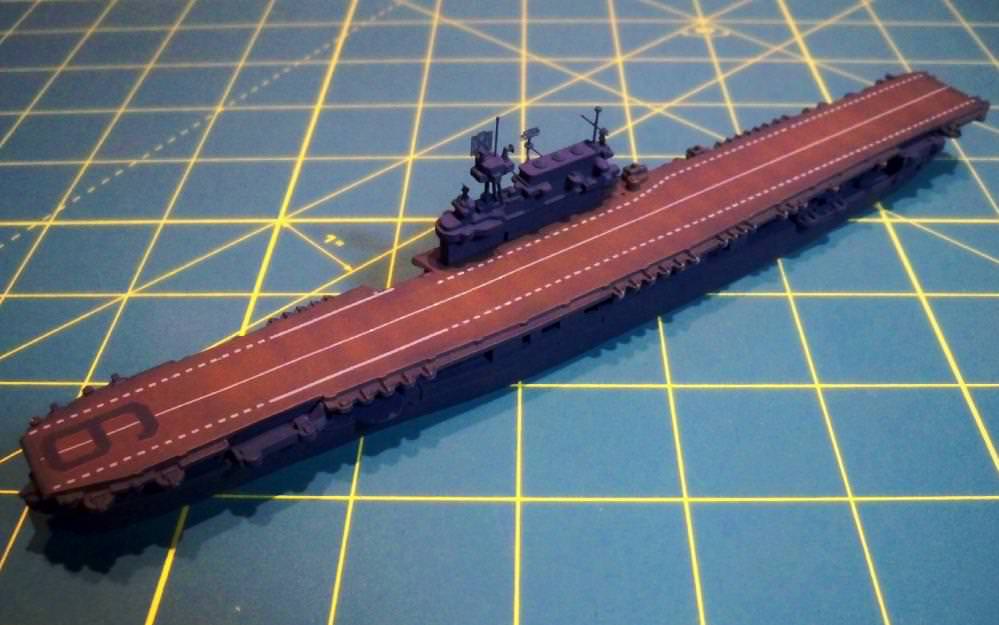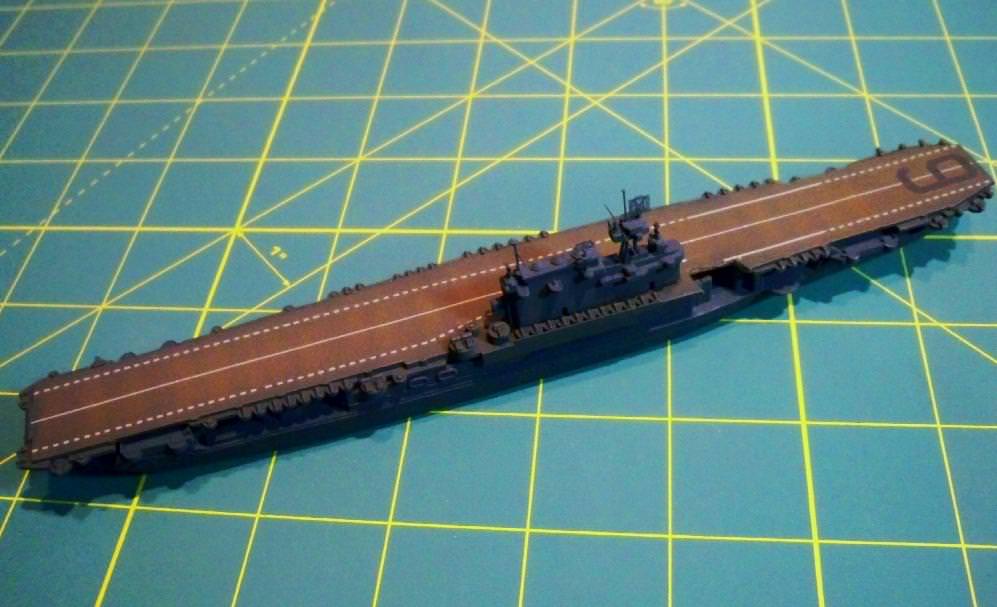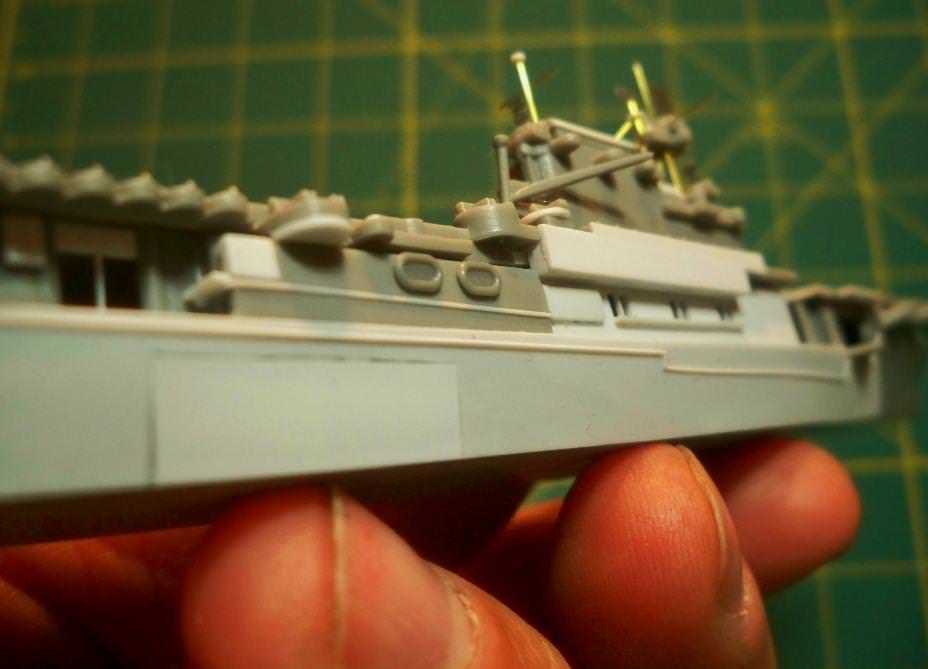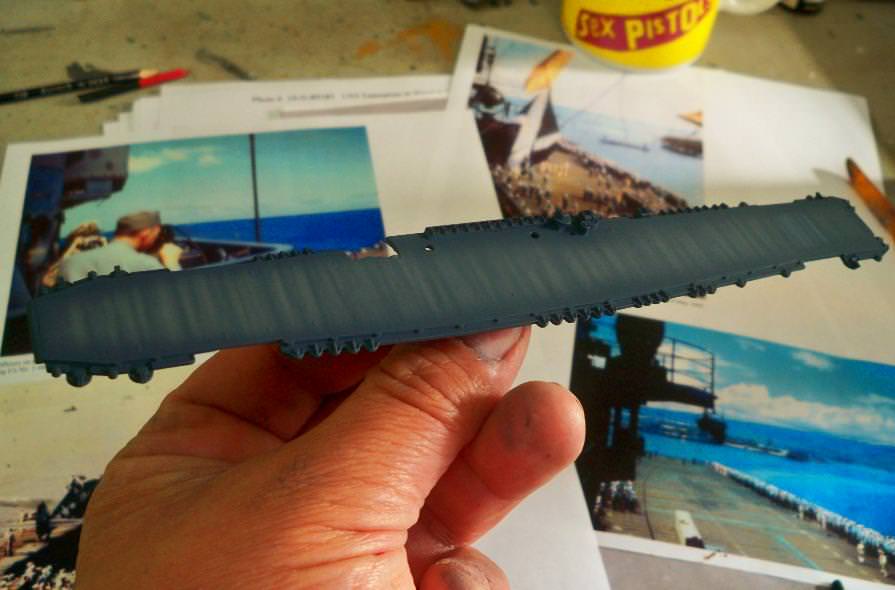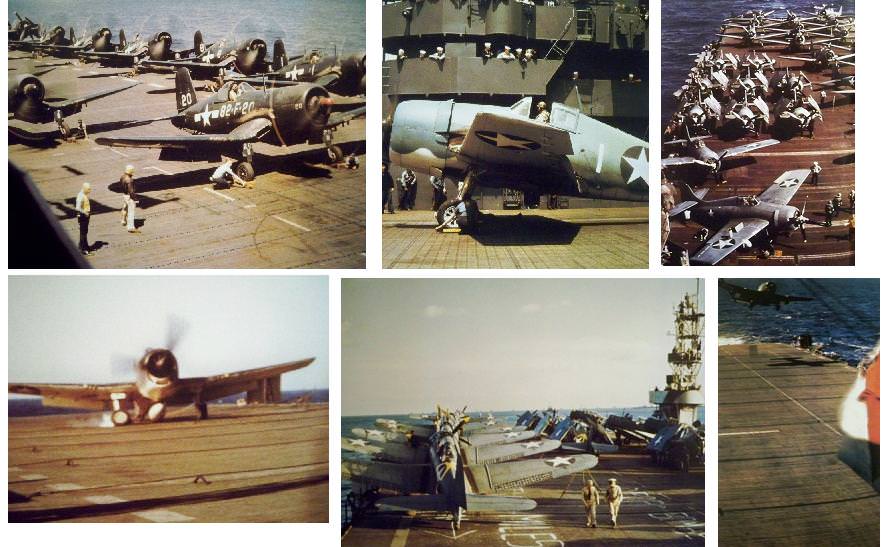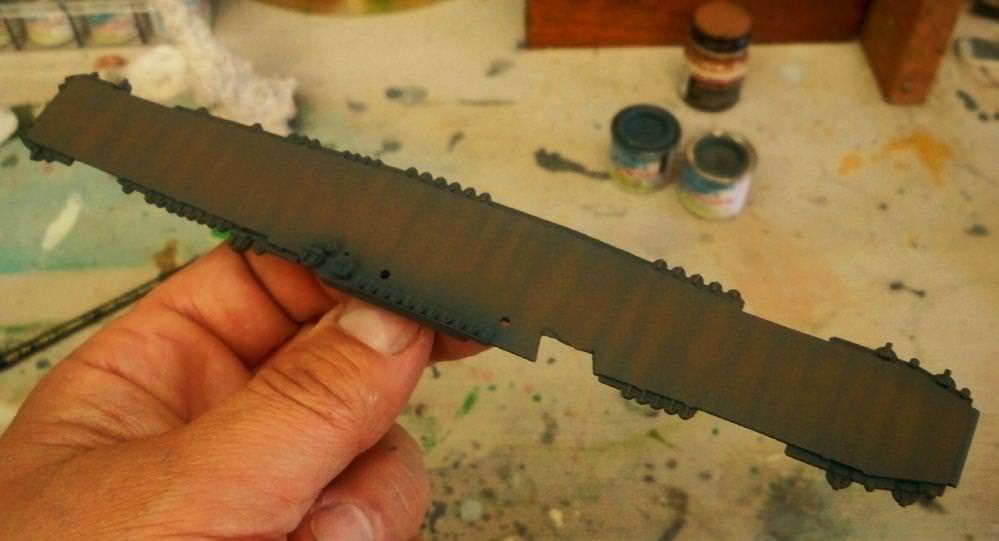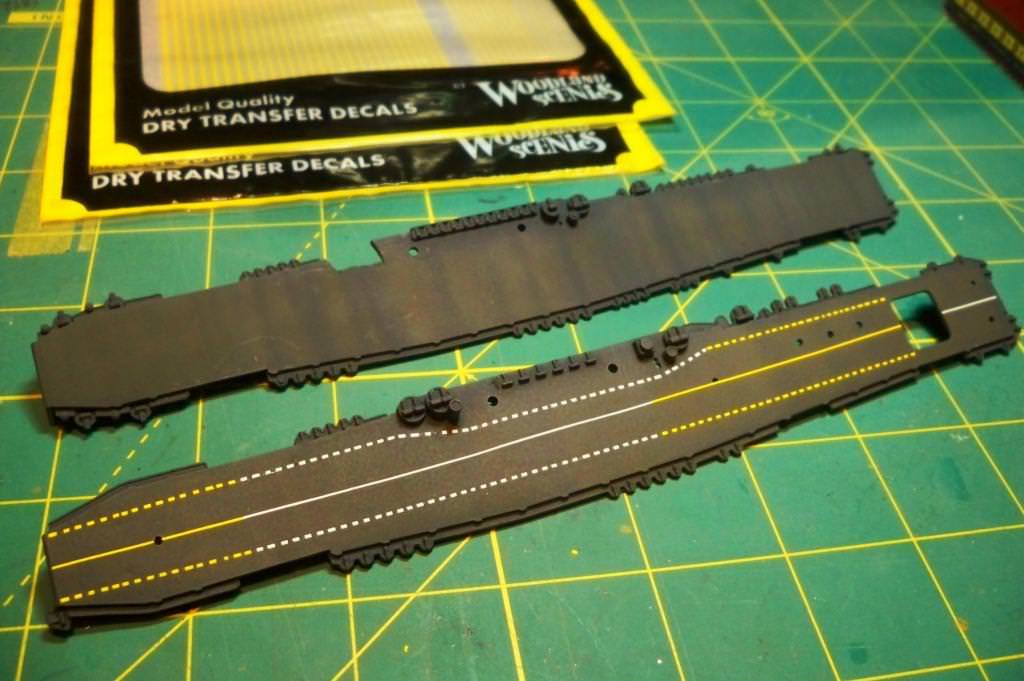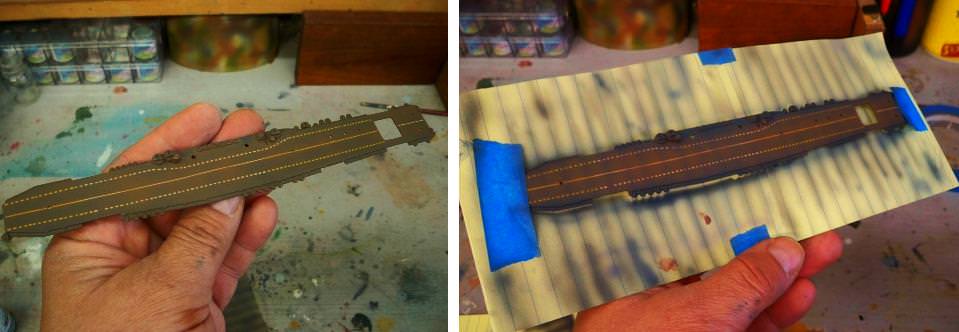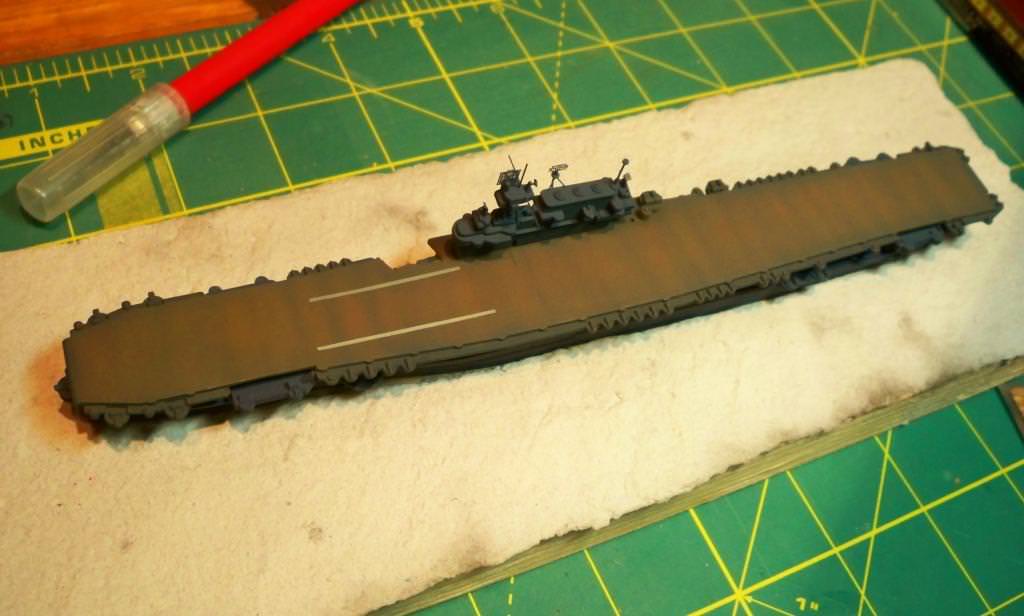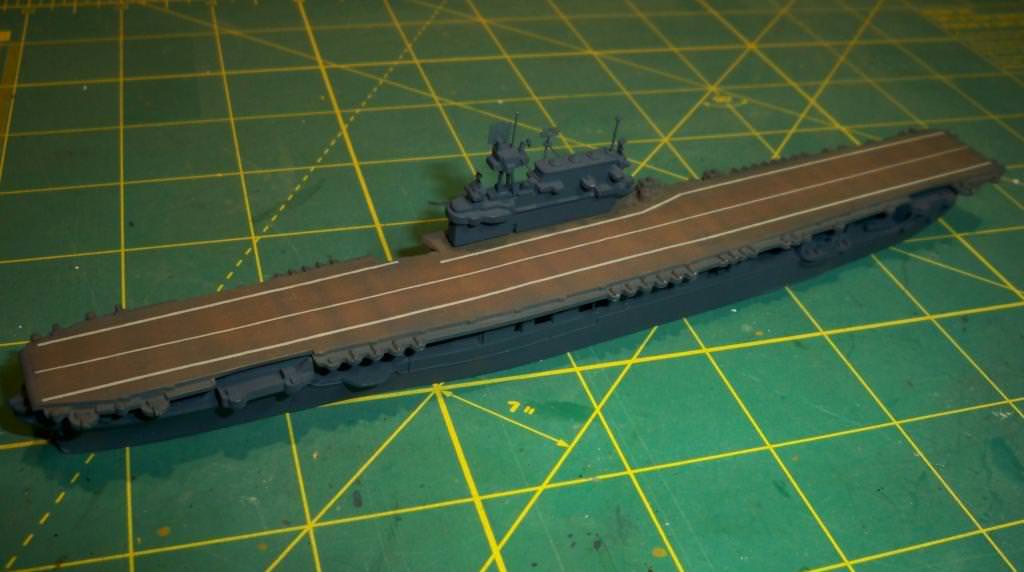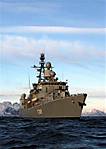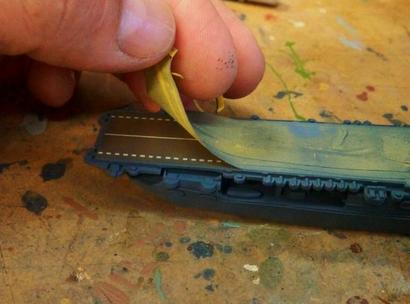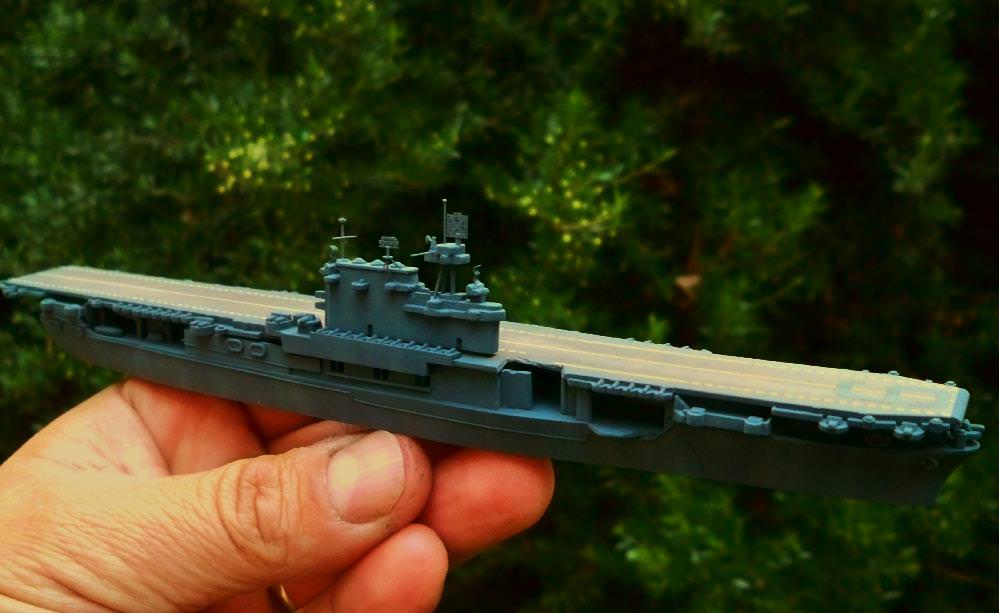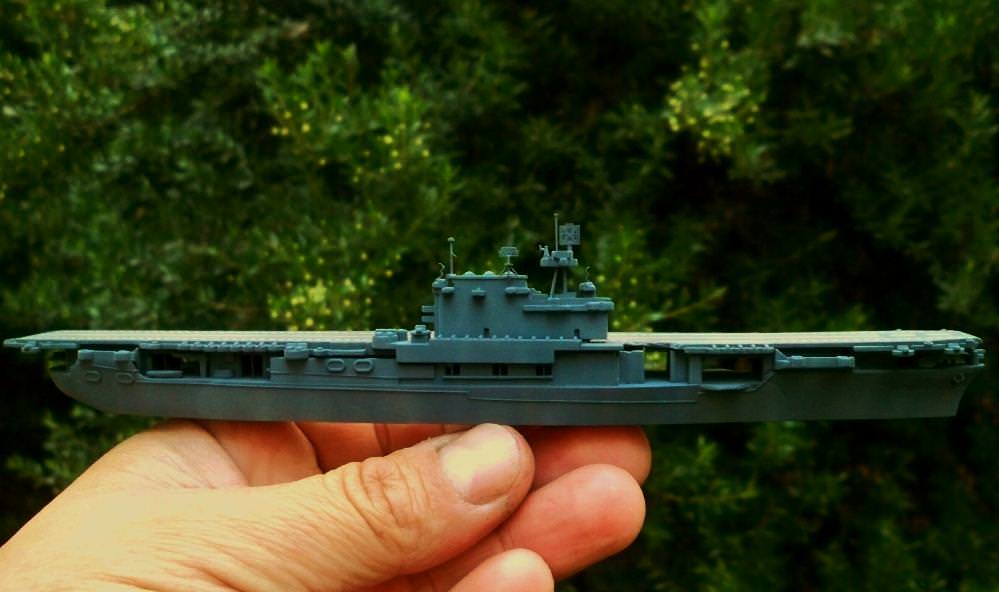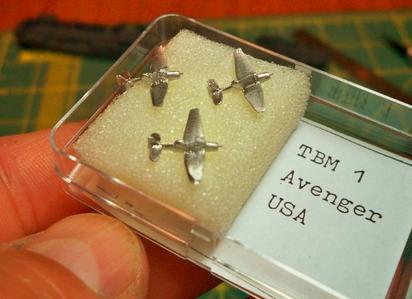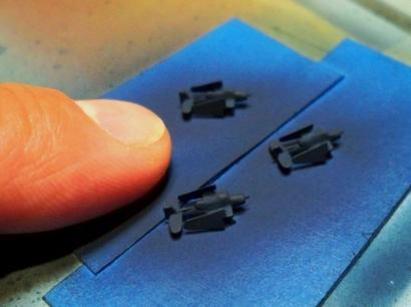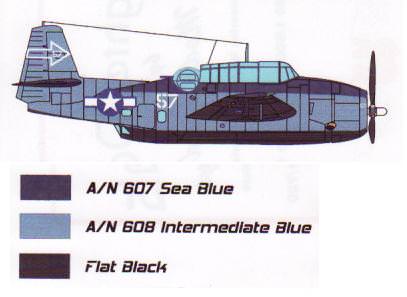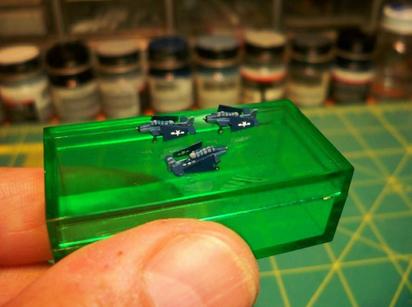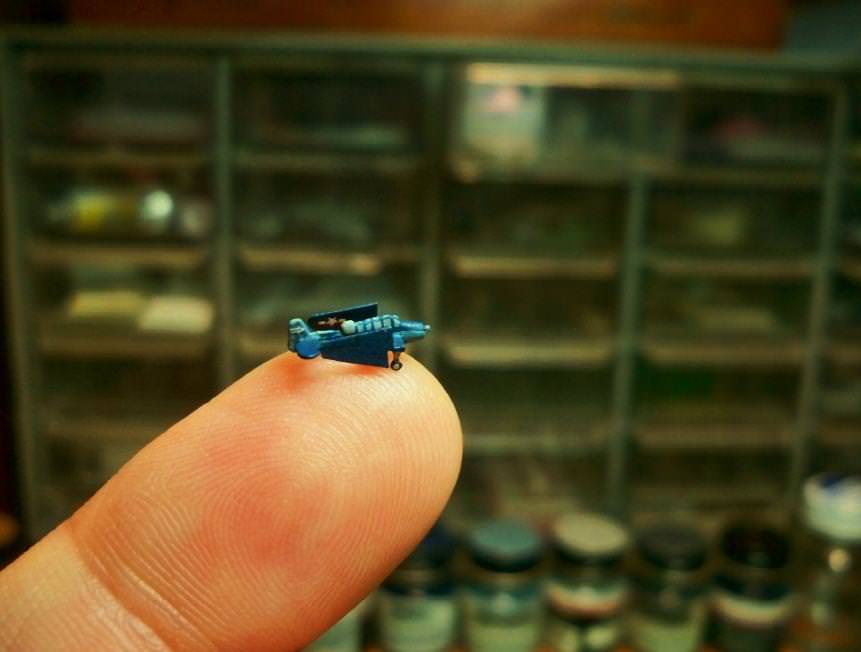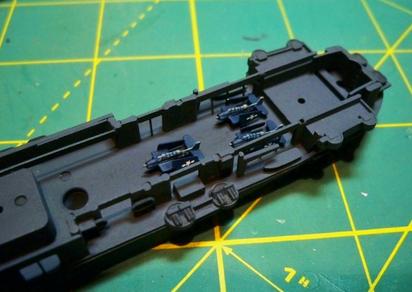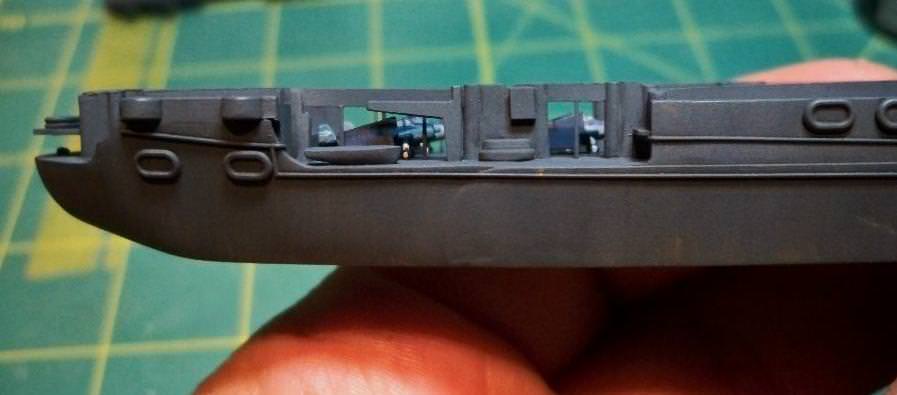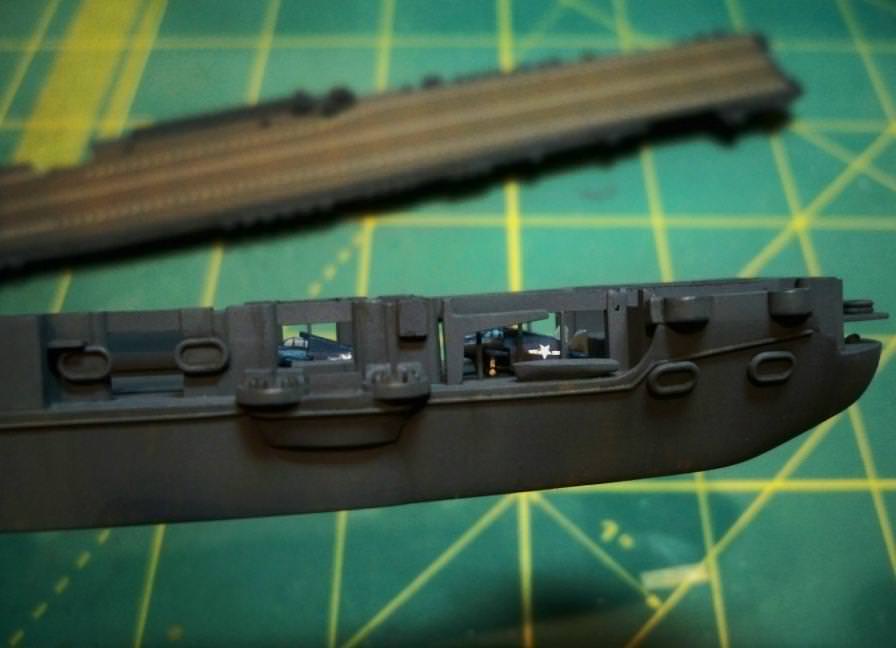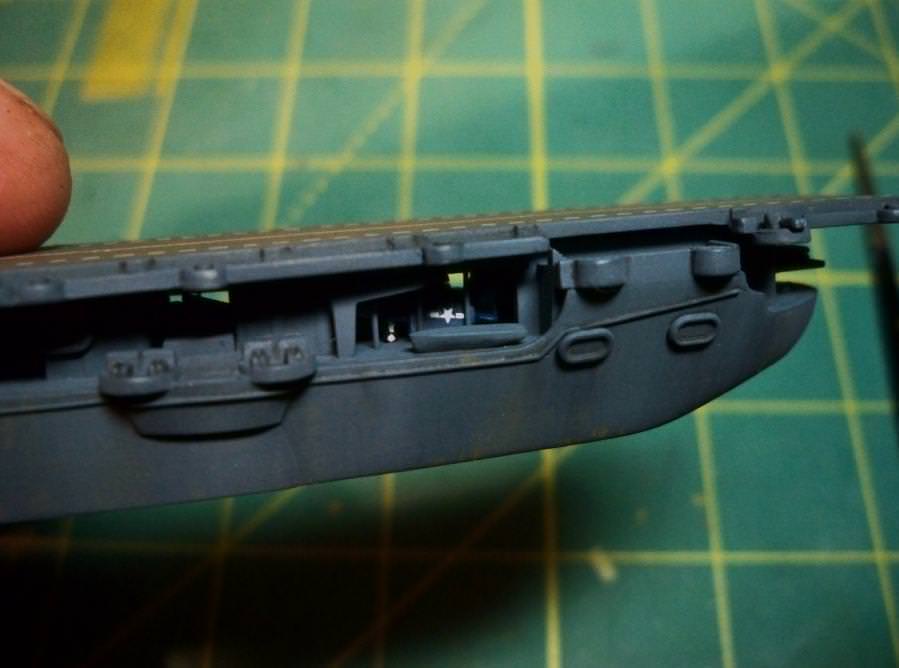The dry transfers came as solid lines, but only Enterprise’s center line was solid; the outer lines were dashed. I made these individually from the solid lines already applied to the deck. This involved making tiny cuts every one millimeter with a new X-Acto blade and then carefully removing alternate segments. To keep the intervals consistent, I photocopied the edge of my ruler showing 1 mm marks and temporarily taped it to the deck as a guide. This simple process, though tedious, yielded good dashed lines.
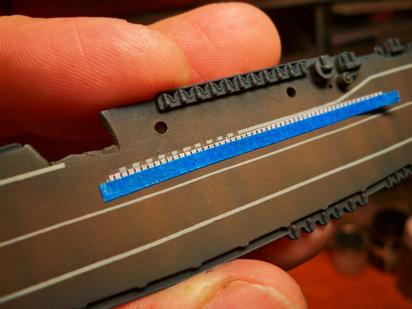
Next on the flight deck came the Enterprise’s (CV-6) identification number. Oddly, the number was oriented so that it would have looked like a “9” when seen from astern, the direction from which landing planes would normally have approached. I thought the whole point of these numbers was ship identification so returning planes wouldn’t land on the wrong carrier, but placing it that way could have caused confusion with the Essex (CV-9) - a ship with which Enterprise was actually operating in 1945! Was this a security measure, since the Enterprise was the only surviving ship of her class by then... or just a screw up? Photos of the ship from before this time show the number positioned in the more logical orientation of “6” when seen from astern, and when she was repaired in the months after the attack, the number was reapplied in that way once again... interesting.
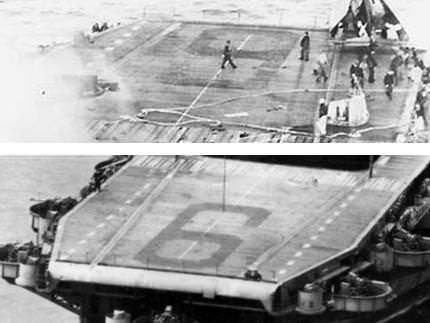
Anyway, the Big E carried only the forward marking at the time of the May 1945 attack. On U.S. carriers of the time these flight deck markings were typically painted in a dull black, and Enterprise appears to have followed this practice as well. Photos show the number to have been weathered down to a fairly low contrast with the worn deck, so I decided to go with a dark gray. Since I didn’t have a marking of the right size or color, I had to make one. Using a number “6” from the Gold Medal Models 700-2D 1/700 scale WW2 US Aircraft Carrier Decals set, I photocopied the image (reducing it to 1/1200 scale) and printed it out. I then airbrushed Model Master Schwartzgrau ’39-43 RAL 7021 (a WWII German Luftwaffe color) over some spare Microscale decal sheet. Taping the printed number over the decal sheet, I cut it out, leaving a nice little homemade gray “6” decal for the flight deck.
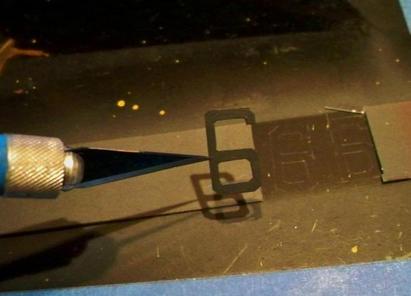
After applying the number to the deck over the centerline forward, the finished flight deck was sealed under another protective layer of Testors Dullcote lacquer.
